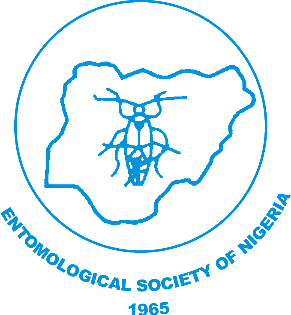
Assessment of Qualitative and Quantitative Damage by Coffee Bean Weevil (Araecerus fasciculatus) on Selected Dried Chips
NJE Vol. 40(2): 80-91, 2024
DOI.10.36108/NJE/4202/04.0260
*Gbolahan F. A.,1,2 and Omoloye, A. A.2
1Department of Home and Rural Economics, Federal Cooperative College, Eleyele, Ibadan.
2Department of Crop Protection and Environmental Biology, University of Ibadan, Ibadan
Correspondence email: feliciagbolahan@gmail.com ORCID: 0009-0007-9627-0142
Abstract
Insect pests are important biotic organisms that cause significant damage to food crops. In a bid to prevent deterioration, farmers processed them into dried chips and thereafter consumed or stored. Coffee bean weevil, Araecerus fasciculatus is a major insect pest causing severe economic losses during storage in Nigeria. The study investigated the qualitative and quantitative damage of selected dried chips due to attack of A. fasciculatus. Quantitative weight loss of cassava, potato, water yam, white yam and plantain was assessed by placing two sets of 200g sample of each dried chips materials in 2 litres capacity Kilner jars, covered with muslin cloth for aeration and to stop other pests from infesting them. In the first set, twenty-day old adult A. fasciculatus were introduced into the Kilner jars and the sets up arranged in the laboratory using a Completely Randomized Design (CRD), at temperature of 27±3oC, 65±5% relative humidity and 12 hours photophase. The second sets up were left uninfested to serve as control. The experiment was replicated four times. The set up were reweighed at 30, 60 and 90 days after infestation to determine the weight loss in percentage. Qualitative loss was evaluated through proximate and mineral analyses. The frass amount generated by the A. fasciculatus was measured after 90 days of infestation. Plantain and cassava experienced highest percentage damage as well as highest amount of frass production due to preference, texture and their composition. Proximate and mineral analyses of the dried chips after 90 days of infestation showed significant reduction in the content of ash, crude fibre, dry matter, calcium, potassium, iron, phosphorus and increase in fat, crude protein and moisture content compared to initial contents. Araecerus fasciculatus caused significant damage to dried chips due to continuous feeding on them and also showed highest preference for plantain and cassava while the least preference was on sweet potato.
Keywords: Araecerus fasciculatus, Qualitative, Quantitative, Damage, Dried chips.
